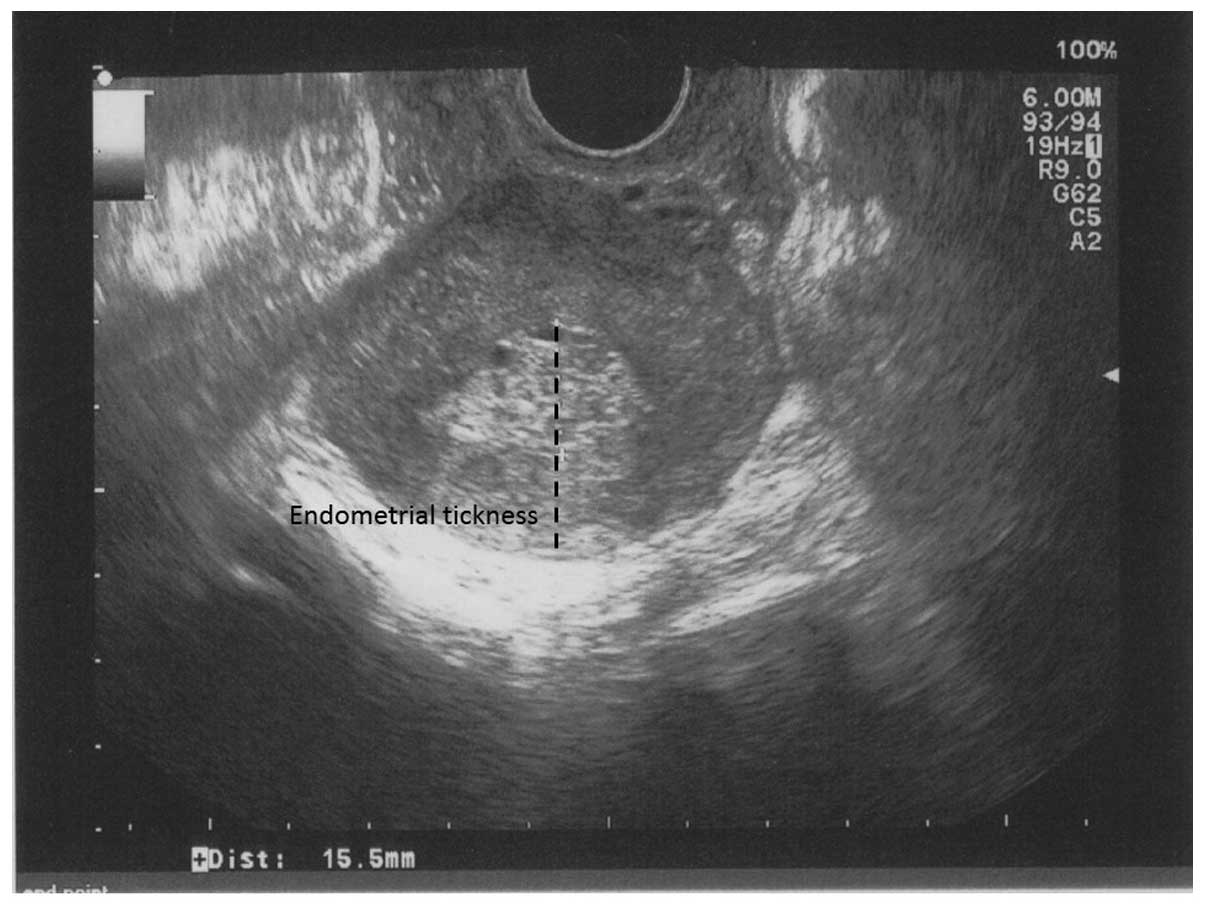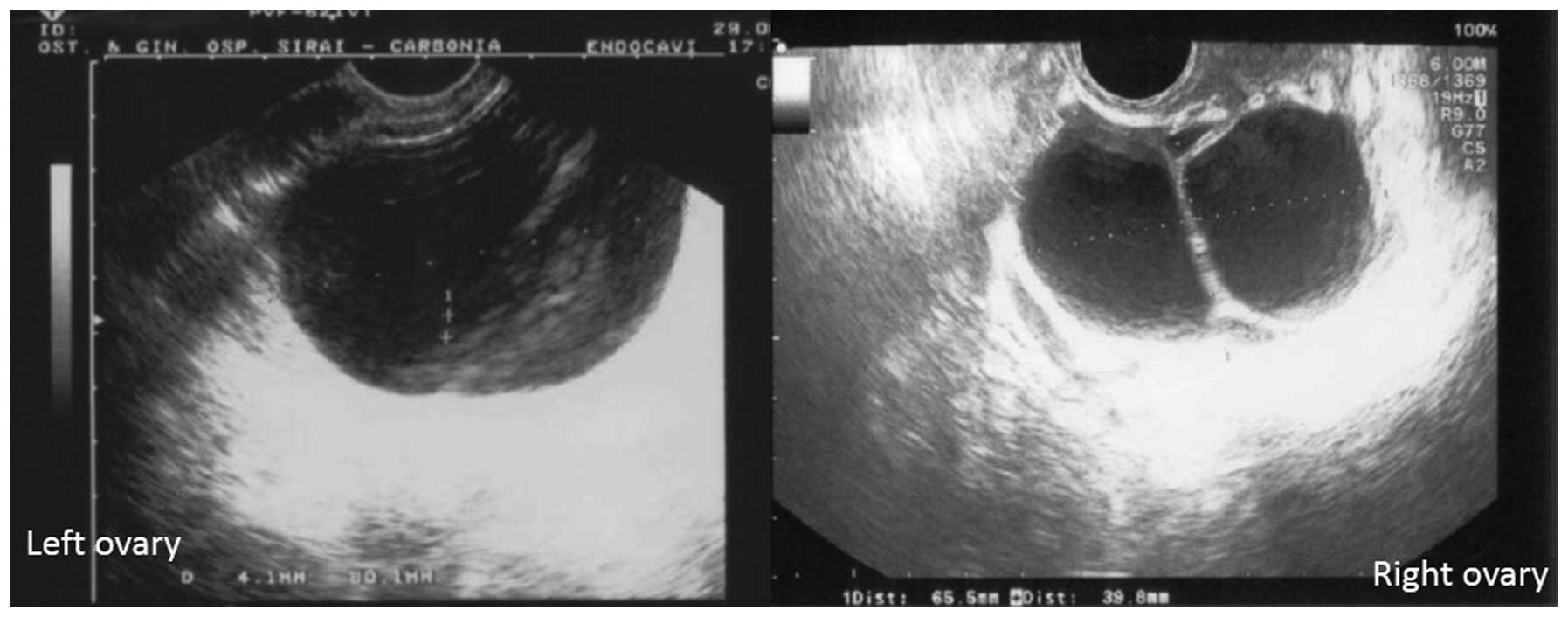|
1
|
Jankowitz RC, McGuire KP and Davidson NE:
Optimal systemic therapy for premenopausal women with hormone
receptor-positive breast cancer. Breast. 22(Suppl 2): S165–S170.
2013.
|
|
2
|
Senkus E, Kyriakides S, Penault-Llorca F,
Poortmans P, Thompson A, Zackrisson S and Cardoso F; ESMO
Guidelines Working Group. Primary breast cancer: ESMO Clinical
Practice Guidelines for diagnosis, treatment and follow-up. Ann
Oncol. 24(Suppl 6): vi7–vi23. 2013.
|
|
3
|
Goldhirsch A, Winer EP, Coates AS, Gelber
RD, Piccart-Gebhart M, Thürlimann B and Senn HJ; Panel members.
Personalizing the treatment of women with early breast cancer:
highlights of the St Gallen International Expert Consensus on the
Primary Therapy of Early Breast Cancer 2013. Ann Oncol.
24:2206–2223. 2013.
|
|
4
|
Goel S, Sharma R, Hamilton A and Beith J:
LHRH agonists for adjuvant therapy of early breast cancer in
premenopausal women. Cochrane Database Syst Rev.
2009.CD0045622009.
|
|
5
|
Davidson NE, O’Neill AM, Vukov AM, Osborne
CK, Martino S, White DR and Abeloff MD: Chemoendocrine therapy for
premenopausal women with axillary lymph node-positive, steroid
hormone receptor-positive breast cancer: results from INT 0101
(E5188). J Clin Oncol. 23:5973–5982. 2005.
|
|
6
|
Higgins MJ and Davidson NE: What is the
current status of ovarian suppression/ablation in women with
premenopausal early-stage breast cancer? Curr Oncol Rep. 11:45–50.
2009.
|
|
7
|
Del Mastro L, Levaggi A, Giraudi S and
Pronzato P: Luteinising hormone releasing hormone agonists (LH-RHa)
in premenopausal early breast cancer patients: current role and
future perspectives. Cancer Treat Rev. 37:208–211. 2011.
|
|
8
|
Mourits MJ, de Vries EG, Willemse PH, ten
Hoor KA, Hollema H, Sluiter WJ, de Bruijn HW and van der Zee AG:
Ovarian cysts in women receiving tamoxifen for breast cancer. Br J
Cancer. 79:1761–1764. 1999.
|
|
9
|
Jordan VC, Fritz NF, Langan-Fahey S,
Thompson M and Tormey DC: Alteration of endocrine parameters in
premenopausal women with breast cancer during long-term adjuvant
therapy with tamoxifen as the single agent. J Natl Cancer Inst.
83:1488–1489. 1991.
|
|
10
|
Zarbo G, Caruso G, Zammitti M, Caruso S
and Zarbo R: The effects of tamoxifen therapy on the endometrium.
Eur J Gynaecol Oncol. 21:86–88. 2000.
|
|
11
|
American College of Obstetricians and
Gynecologists Committee on Gynecologic Practice. ACOG committee
opinion: No. 336: Tamoxifen and uterine cancer. Obstet Gynecol.
107:1475–1478. 2006.
|
|
12
|
Cohen I, Figer A, Tepper R, Shapira J,
Altaras MM, Yiagel D and Beyth Y: Ovarian overstimulation and
cystic formation in premenopausal tamoxifen exposure: comparison
between tamoxifen-treated and nontreated breast cancer patients.
Gynecol Oncol. 72:202–207. 1999.
|
|
13
|
Shushan A, Peretz T, Uziely B, Lewin A and
Mor-Yosef S: Ovarian cysts in premenopausal and postmenopausal
tamoxifen-treated women with breast cancer. Am J Obstet Gynecol.
174:141–144. 1996.
|
|
14
|
Shushan A, Peretz T and Mor-Yosef S:
Therapeutic approach to ovarian cysts in tamoxifen-treated women
with breast cancer. Int J Gynecol Obstet. 52:249–253. 1996.
|
|
15
|
Cohen I, Tepper R, Figer A, Flex D,
Shapira J and Beyth Y: Successful co-treatment with LHRH-agonist
for ovarian over-stimulation and cystic formation in premenopausal
tamoxifen exposure. Breast Cancer Res Treat. 55:119–125. 1999.
|
|
16
|
Shulman A, Cohen I, Altaras MM, Maymon R,
Ben-Nun I, Tepper R and Beyth Y: Ovarian cyst formation in two
pre-menopausal patients treated with tamoxifen for breast cancer.
Hum Reprod. 9:1427–1429. 1994.
|
|
17
|
Turan C, Unal O, Dansuk R, Guzelmeric K,
Cengizoglu B and Esim E: Successful management of an ovarian
enlargement resembling ovarian hyperstimulation in a premenopausal
breast cancer patient receiving tamoxifen with cotreatment of
GnRH-agonist. Eur J Obstet Gynecol Reprod Biol. 97:105–107.
2001.
|
|
18
|
Bao T and Davidson NE: Adjuvant endocrine
therapy for premenopausal women with early breast cancer. Breast
Cancer Res. 9:1152007.
|
|
19
|
Berliere M, Duhoux FP, Dalenc F, Baurain
JF, Dellevigne L, Galant C, Van Maanen A, Piette P and Machiels JP:
Tamoxifen and ovarian function. PLoS One. 8:e666162013.
|
|
20
|
Groom GV and Griffiths K: Effect of the
anti-oestrogen tamoxifen on plasma levels of luteinizing hormone,
follicle-stimulating hormone, prolactin, oestradiol and
progesterone in normal pre-menopausal women. J Endocrinol.
70:421–428. 1976.
|
|
21
|
Goldhirsch A, Gelber RD, Yothers G, Gray
RJ, Green S, Bryant J, Gelber S, Castiglione-Gertsch M and Coates
AS: Adjuvant therapy for very young women with breast cancer: need
for tailored treatments. J Natl Cancer Inst Monogr. 30:44–51.
2001.
|
|
22
|
Early Breast Cancer Trialists’
Collaborative Group (EBCTCG). Effects of chemotherapy and hormonal
therapy for early breast cancer on recurrence and 15-year survival:
an overview of the randomised trials. Lancet. 365:1687–1717.
2005.
|
|
23
|
LHRH-agonists in Early Breast Cancer
Overview Group. Cuzick J, Ambroisine L, et al: Use of
luteinising-hormone-releasing hormone agonists as adjuvant
treatment in premenopausal patients with hormone-receptor-positive
breast cancer: a meta-analysis of individual patient data from
randomised adjuvant trials. Lancet. 369:1711–1723. 2007.
|
|
24
|
Petrek JA, Naughton MJ, Case LD, Paskett
ED, Naftalis EZ, Singletary SE and Sukumvanich P: Incidence, time
course, and determinants of menstrual bleeding after breast cancer
treatment: a prospective study. J Clin Oncol. 24:1045–1051.
2006.
|
|
25
|
Neri F and Maggino T: Surveillance of
endometrial pathologies, especially for endometrial cancer, of
breast cancer patients under tamoxifen treatment. Eur J Gynaecol
Oncol. 30:357–360. 2009.
|
|
26
|
Yang H, Zong X, Yu Y, Shao G, Zhang L,
Qian C, Bian Y, Xu X, Sun W, Meng X, Ding X, Chen D, Zou D, Xie S,
Zheng Y, Zhang J, He X, Sun C, Yu X and Ni J: Combined effects of
goserelin and tamoxifen on estradiol level, breast density, and
endometrial thickness in premenopausal and perimenopausal women
with early-stage hormone receptor-positive breast cancer: a
randomised controlled clinical trial. Br J Cancer. 109:582–588.
2013.
|
















